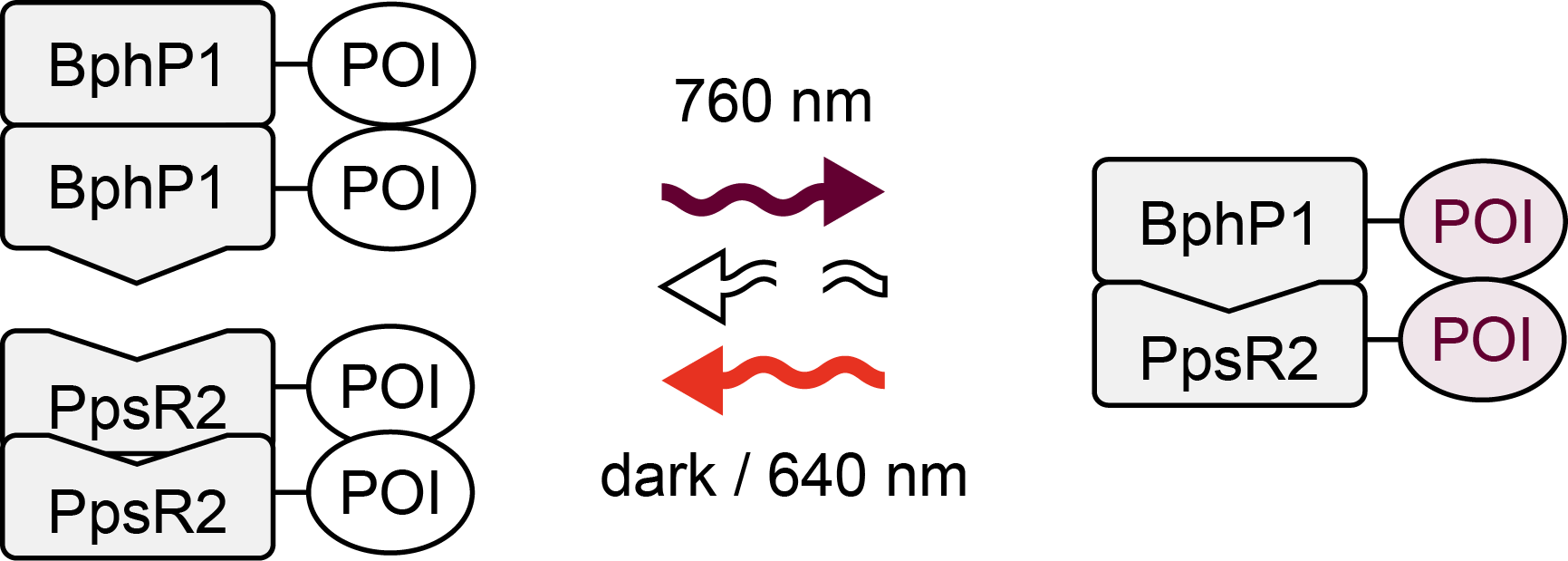BphP1/PpsR2

| Photoreceptor | BphP1 |
| Binding partner | PpsR2 |
| Cofactor | Biliverdin |
| Source organism | Rhodopseudomonas palustris |
| Mode of action | heterodimerization |
| Excitation wavelength | 760 nm |
| Reversion wavelength | 640 nm (faster), dark (slower) |
| Excitation time | seconds |
| Reversion time | seconds |
Crystal structure of a point mutated (C20S) BphP1 photoreceptor, without PpsR2. Note: no wild type structure available at the moment. (PDB ID: 4XTQ)